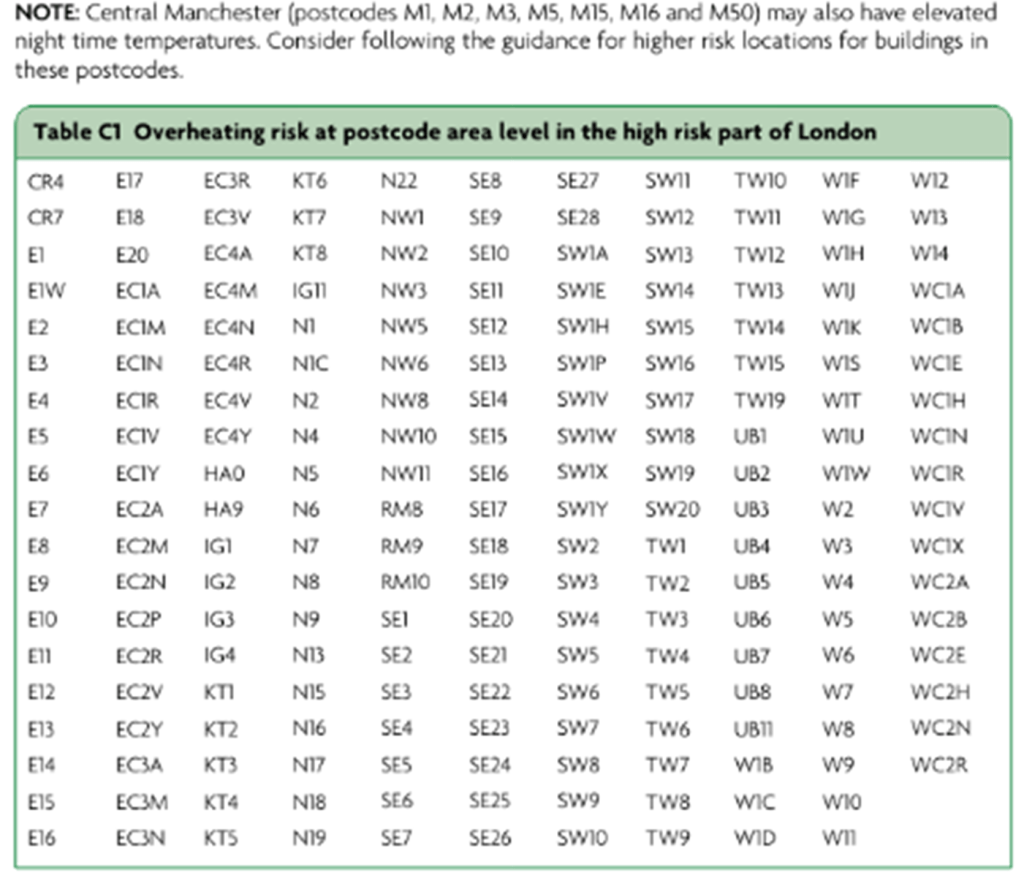Part O Overheating Common Questions

Do I need to comply with Part O?
Part O applies to new residential buildings only. This includes residential dwellings, and institutional dwellings (e.g., student accommodation). Share communal areas and common spaces containing more than one residential unit will fall within the scope of Part O, as do live/work units.
The simplified method is not suitable for buildings with more than one residential unit which use a communal heating or hot water system with significant amounts of horizontal heating or hot water distribution pipework.
Does Part O apply to extensions and conservatories?
Part O only applied to new residential buildings. Conservatories on new residential buildings are included in the calculations and must meet the requirements of Part O.
Part O does not apply to extensions, conservatories added onto existing residential buildings or buildings undergoing a change of use.
Is my project in a high or moderate risk area?
Appendix C of Approved Document Part O outlines all postcodes that are classed as high risk. Some central Manchester postcodes may also be considered as high risk (M1-3, M5, M16, M50).

Buildings in these high-risk areas will have stricter targets and additional requirements to meet:
- External shutters with means of ventilation
- Glazing with a maximum g-value of 0.4 and a minimum light transmittance of 0.7
- Overhangs with 50 degrees altitude cut-off on due south-facing facades only
What targets do I need to meet?
There are 2 criteria in the simplified method:
- Limiting solar gains
- Minimum free area
The targets for these criteria are determined by the orientation of the most glazed façade of the building, the location (moderate or high risk).
Dwellings in high-risk locations have an additional criteria:
In addition to following the maximum glazed areas, high risk dwellings should be provided with shading for glazed areas between compass points north-east and north-west via the south. Shading should be provided by the following means:
- External shutters with means of ventilation
- Glazing with a maximum g-value of 0.4 and a minimum light transmittance of 0.7
- Overhangs with 50 degrees altitude cut-off on due south-facing facades only
Is mechanical ventilation taken into account in a Simplified Overheating calculation?
No, mechanical ventilation is not included in the simplified overheating calculations. The only parameters that are taken into account are the glazing areas and floor areas.
Is external shading taken into account in a Simplified Overheating calculation?
No, external shading is not included in the simplified overheating calculations. The only parameters that are taken into account are the glazing areas and floor areas.
What happens if my Simplified Overheating calculation fails?
We will outline the design changes needed to mitigate overheating risk. For a simplified calculation this includes altering the glazing design. If changing the design of the building is not possible, a TM59 calculation is required.
What is a TM59 calculation?
A TM59 is a dynamic thermal modelling assessment. This is a much more in-depth calculation compared to the simplified method. It takes more parameters into account and can offer alternative mitigation measures.
What is included in a TM59 calculation?
A TM59 calculation takes a full thermal model of the building. This includes the fabric specification, local weather data and all systems installed e.g., heating and mechanical ventilation. If internal blinds and external shading are included in the base design of the building, this will also be included.
What happens if my TM59 calculation fails?
The TM59 report will outline mitigation measures to meet Part O requirements. This can include, mechanical ventilation, solar shading products and external shading e.g., overhangs.
Is air conditioning included in a TM59 calculation?
If mechanical cooling is installed as part of the base design, this will not be included in the calculation. TM59 guidance states that “mechanical cooling may only be used where insufficient heat is capable of being removed from the indoor environment without it.”
Mechanical cooling (e.g., air conditioners) should only be the last resort and used in localised areas where passive measures do not mitigate overheating risk. A TM59 report should demonstrate that all practical passive means of liming unwanted solar gains and removing excess heat have been used first before adopting mechanical cooling.
The impact on energy use and associated carbon emissions must be considered, this design aspect does not only impact Part O, but also other regulatory aspects (Part L).
Share
